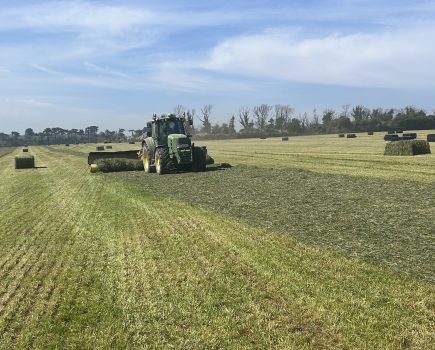A monthly column contributed by Chichester Crop Consultancy (CCC). This month written by Peter Cowlrick.
April brings some key fungicide input decision making that will underpin the performance of winter rape, barley and wheat this harvest.
With regards to rape, there are likely to be two main scenarios; crops that received stem extension growth regulation and fungicides in March and those more backward/pigeon grazed crops that have yet to be sprayed. The key disease risks to oilseed rape at the early flowering stages are light leaf spot and Sclerotinia, and both require a protectant-based approach with fungicide inputs.
Light leaf spot is a polycyclic pathogen that moves up the canopy during wet weather and is particularly damaging if it becomes established on the pods. Sclerotinia requires soils that are moist and warm (over 10°C) for fruiting bodies (apothecia) to appear and release airborne spores which then infect flower petals. When infected flower petals drop, they lodge on branches of the flowering canopy and can infect the stems/branches, causing premature senescence and significant yield losses if not treated. Prothioconazole-based treatments will cover both diseases at the early flowering stage, with Tebuconazole, Azoxystrobin and various SDHI additions offering broader spectrum disease control and canopy greening effects.
For winter barley, the T1 fungicide timing (GS30-31) is key to building yield potential, as being “sink-limited”, final yield in winter barley is determined by high numbers of viable tillers, rather than the number of grain sites. Tiller retention is critical, and significant early disease pressure can cause the plant to abort tillers. Currently there is plenty of brown rust present, and net blotch can be found on susceptible cultivars, with Rhynchosporium largely absent.
Net blotch control is a growing concern as there are increasing levels of insensitivity to both azole and SDHI chemistry, which makes timely intervention important. T1 fungicide inputs should be based around Prothioconazole or Mefentrifluconazole in combination with SDHIs, with a strobilurin (e.g. Pyraclostrobin or Trifloxystrobin) added where there is significant net blotch infection.
St George’s Day provides a useful reminder of the T1 fungicide timing in winter wheat when final leaf 3 is at least 75% emerged on main shoots, but depending on sowing date and variety this can be anything from 10 days before to 10 days later. This timing is very important to provide around three weeks fungicide protection until the key flag leaf emergence stage in May.
The key disease targets at this timing are Septoria, brown and yellow rust, eyespot and mildew; there is currently plenty of Septoria infection, and brown rust is easy to find in susceptible varieties, along with low levels of yellow rust.
Achieving high levels of Septoria control at this timing under high pressure is increasingly problematic due to the recent loss of some key actives (notably Chlorothalonil) and selecting varieties with sound genetic resistance is important.
Independent trials have shown that yield responses are typically only around 10% from T1 fungicides (range 5-20%). Spend should reflect the level of disease risk determined by sowing date, variety and recent weather. Fungicides should be based around either Prothioconazole or Mefentrifluconazole in combination with an SDHI for well-established crops sown from September to mid-October or potentially a lower-cost triazole-based combination for crops with lower yield potential and/or later sown.







